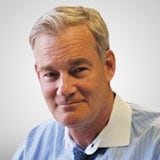A little over a year ago, everyone was filled with angst over the Fed’s impending taper of its bond purchases. That was supposed to cause interest rates to spike and stocks to get whacked. So much for that theory, asserts John Boyd in Fidelity Monitor & Insight.
Now that we are nearing the end of tapering, the worry has become that the Federal Reserve will soon start raising short-term interest rates and stocks will crumble. As I have argued since last September, fears of Fed rate hikes are overblown.
First, we don’t see the Fed raising rates for some time yet. Prevailing expectations are for a first hike around mid-2015. While improving labor market conditions and other strengthening economic data has caused some to anticipate an earlier start, we don’t subscribe to that view.
Second, and far more important, the start of tightening does not mean that good times for stocks are over.
Strategists at Wells Fargo Advisors looked at what happened to stock prices the last two times the Fed initiated a series of rate hikes (February 1994 and June 2004).
I have replicated their work (with the addition of dividends) and the result is that stocks continued to enjoy strong gains for a long time after the first rate hike.
For example, if you invested in stocks in November 2006, a full 30 months after the first rate hike in June 2004, you would have enjoyed a 14.5% return over the next year.
Of course, the sample is small and the past is an imperfect guide. Also, the present situation is quite unique with its zero-interest-rate policy and unconventional bond buying, which could affect how investors react to the start of rate hikes.
In addition, the analysis does not take market valuations into account. But, the results should really not be that surprising.
The Fed does not embark on a tightening cycle unless there are clear signs that economic conditions are improving to such an extent as to threaten a significant acceleration in inflation. And, improving economic conditions are supportive of improving earnings and stock prices.
It’s true that as rates rise, bonds become relatively more attractive versus stocks. In addition, rising rates can lower P/E ratios. But typically, only after multiple hikes, when higher rates start to reduce economic activity and push the economy towards recession, do stocks really feel the pinch.
I do not expect the Fed to move to hike rates sooner-than-expected and the reason is simple. While Yellen is certainly her own woman, she is definitely from the Bernanke school and Bernanke was a keen student of the Great Depression.
A key lesson learned was how premature tightening of fiscal and monetary policies in 1937 caused a second downward spiral. As a result, I see her erring on the side of caution longer than many expect.
On balance, I still think that the data will not be so strong as to cause the Fed to act sooner. The continuing weakness in Europe’s economies remains an outside risk to our own economic health, and they will pay attention to that.
If they do end up moving sooner, there may be a selloff in response, but it should be temporary. This is the most telegraphed rate hike in history so much of the adjustment to higher rates has already occurred.
And we expect the pace of rate increases to be measured and modest.
Remember that rates going up means the economy can finally be taken off life support.
Subscribe to Fidelity Monitor & Insight here…
More from MoneyShow.com:











